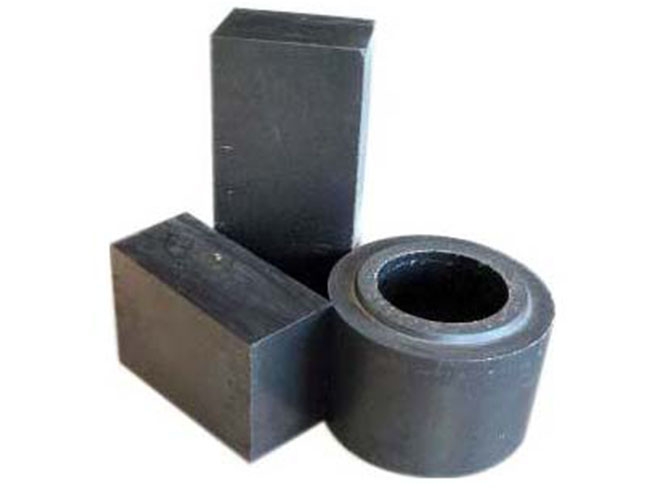Development prospect of magnesia alumina brick
The public welfare properties of refractory materials mainly depend on the mineral composition particle composition of raw materials, are closely related to the manufacturing process of refractory materials. These properties mainly include particle size particle size distribution, fineness specific surface area, price plasticity binding property of electric furnace magnesia carbon brick, drying shrinkage sintering shrinkage, sintering temperature sintering range, etc.
1、 Particle size particle size distribution
Particle size refers to the particle size of refractory raw materials. Particle size distribution (PSD) refers to the weight percentage of particles with different particle size grades (expressed in mm, μ m mesh size) in a continuous range. The particle size distribution of clay materials has a great influence on its plasticity, drying performance firing performance. The influence of particle size distribution of raw materials on bulk density, porosity, mechanical strength thermal shock stability of refractory products is also obvious. In order to obtain the refractory with stable quality, in addition to the chemical mineral composition of raw materials, there should be clear requirements on the particle size distribution.
The particle size distribution is usually determined by sieve analysis particle analyzer. Screening analysis includes dry sieving water sieving. Due to the limitation of the mesh size, the screening analysis is suitable for the determination of the distribution of coarse particles (> 10 μ m). Particle analyzer is usually used to measure the size distribution of clay fine particles of differential grade.

2、 Fineness specific surface area
Fineness refers to the fineness of powdery raw materials, which is usually expressed by the percentage of residue specific surface area of standard sieve, by the percentage composition of particle size the average diameter of materials per unit weight. There is no strict difference between fineness particle size of medium grade magnesia, but the former is used to express the fineness of fine powder raw materials.
Specific surface area refers to the surface area per unit mass of raw materials, unit: M / g. Specific surface integral external internal surface areas. The ideal non porous raw materials have only external surface area, but the raw materials with pores have inner surface area in addition to external surface area. There are many methods to determine specific surface area, such as gas adsorption method, organic molecular adsorption method gas permeability method.
3、 Plasticity combination
The property that the material deforms without cracks after being subjected to external force is called plasticity. When the external force is released, the shape of deformation still remains no longer returns to its original state. Plasticity is an important index of molding technology of combined clay. The plasticity is related to the water adsorption performance, specific surface area water volume of solid particles. For example, after adding water to clay, a layer of water film is adsorbed on the surface of a large number of clay particles, which makes it easy for the particles to slide under the action of external force, has a certain binding force, so it has high plasticity.
Plasticity can be measured by plasticity index method plasticity index method, also by plasticity moisture. Plasticity index refers to the change range of water content when the clay is in plastic state, its value is equal to the difference between liquid limit (liquid limit) plastic limit (plastic limit). The liquid limit is the upper limit water content when the clay is plastic. When the water content exceeds the liquid limit, the slurry is in semi-solid state. The difference between liquid limit plastic limit, expressed as a percentage, is the plasticity index.
The plasticity index represents the molding performance of the slurry. The method is to process the mud into a sphere with a diameter of 45mm, put it into a plastic instrument, compress it with gravity until cracks begin to appear. The plasticity index is the deformation degree of clay ball under the action of external force, i.e. the product of stress strain. The calculation formula is as follows:
Plasticity index s = (D-B) g
: D -- original diameter of mud ball, cm;
B -- height of mud ball compressed by gravity, cm;
G -- load of mud ball with a crack under compression, kg
According to plasticity index plasticity index, clay plasticity can be divided into four categories
There are many factors affecting the plasticity of clay. One is the formation age, mineral types, crystalline morphology crystallinity of clay minerals. Kaolin composed of high ordered kaolinite has low plasticity, while kaolin composed of low ordered kaolinite is opposite. In addition, the particle size, cation exchange ability exchangeable cation type of clay all affect its plasticity. The plasticity comparison of several commonly used binding clays is shown in Table 2.
In practical production, the main methods to increase the plasticity of raw materials are as follows:
① Selecting materials to remove non plastic impurities, such as quartz, etc;
② Fine grinding the selected material to increase its dispersion;
③ Add appropriate amount of plastic material binder, such as pulp waste liquid, dextrin, etc;
④ The slurry was extruded in vacuum;
⑤ Prolong the trapped time.
The binding property of raw materials refers to the combination of clay materials non plastic materials to form plastic mud masses with certain drying strength. The binding property of bound clay is usually reflected by the amount of standard quartz sand (70% of particle composition is 0.25 ~ 0.15mm, 30% is 0.15 ~ 0.09mm) the flexural strength after drying. Generally, clay with strong plasticity has strong binding capacity (there are also exceptions, such as Nanning ball clay is very pure, fine particle size, good plasticity. However, due to the large surface energy, more adsorbed water, large dehydration shrinkage during drying more cracks, the drying strength is poor. The plasticity index is 36-47, while the flexural strength is only 0.48 MPa.


Address: Guantun Town, Dashiqiao City, Liaoning Province
Tel: +86-0417-5365999 5365888
Sales Department: +86-0417-5365188
Finance department:+86- 0417-5365288
Technology Department: +86-0417-5365588
Fax: +86-0417-5365239 +86-0417-5365999